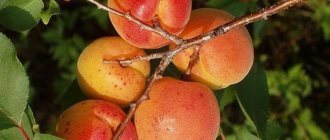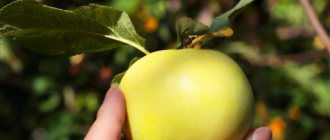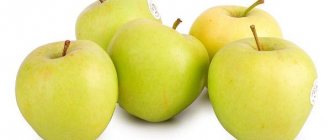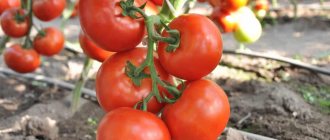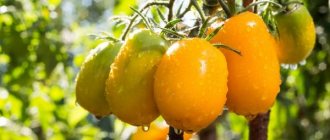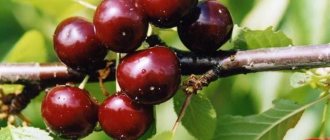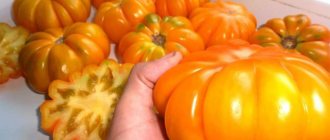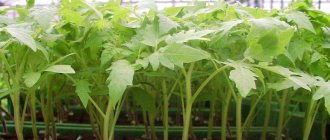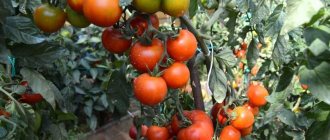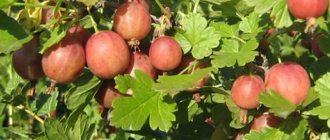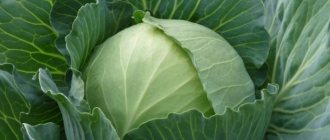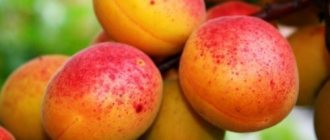Characteristics of the variety
The tree tolerates various climatic conditions well. It is considered resistant to increased amounts of moisture. Characterized by mid-ripening and good yield. Honey fruits are universal. They are delicious both fresh and canned.
Resistance to diseases and pests
At the moment, the variety is not declared in the State Register. Therefore, there is no confirmed data on its resistance to diseases and pests. It is recommended to focus on the main pests in your region and take preventive measures to protect the tree. Apricots are usually treated with a 3% solution of Bordeaux mixture until the buds open.
Drought and frost resistance
As for winter hardiness, the tree grows well in 7–5 winter hardiness zones with minimum winter temperatures from -17...-29°C. The last value corresponds to the latitude of St. Petersburg. Suitable for growing in the Urals and central Russia.
Honey's resistance to drought is typical for apricots. An adult tree tolerates it well thanks to its branched root system. If there is no watering, the tree can also grow. But the lack of moisture affects fruiting. The harvest becomes smaller and the fruits become smaller.
Flowering and ripening times
Honey is a medium-ripening variety with a universal purpose. Its fruits ripen by the end of July or early August. The seedling begins to bear fruit quite early - 4 years after planting.
Important! If the weather is cool, the ripening process is delayed. Therefore, when indicating the dates, they write two months for a variety, for example, July-August.
Productivity and transportability
The average yield per tree is 15–20 kg. It increases gradually as the tree grows and reaches a maximum at 8–10 years. Apricot bears fruit for 20 years. But this parameter depends on its growing conditions, diseases and soil quality. The seedling must be protected from the north wind - it affects the number of years of fruitfulness.
Application
The fruits of the Honey variety are golden-orange in color, round, not too soft and not too hard. They are perfect for fresh consumption, drying and storing for the winter.
Read about the features of dried apricot.
Usage
Due to the fact that this type of apricot has excellent taste, its fruits are often consumed fresh. High shelf life allows you to eat fresh apricots even on the eve of winter. Moreover, the presence of a slight bitterness is considered by some experts as a piquant highlight of Pogremok.
In addition, apricots can be used to make preserves, jams or compotes. They also make very tasty dried fruits. Many experts recommend such apricots or dried fruits as a dietary or medicinal product.
Thus, taking into account all the information provided regarding the Ragremok apricot, we can conclude that this fruit tree will be an excellent addition to any garden. With proper planting and pruning, the tree can produce a fairly high yield, and the high shelf life of the fruit will allow you to eat fresh apricots even several months after they were harvested.
Characteristics of the tree and fruits
Trees of this variety have an average height (up to 4 m), a rounded, completely non-thickened crown, so they look very compact and even decorative. The branches are located at a great distance from each other. In young plants they are directed upward, in fruit-bearing plants they hang down and bend down to the ground, especially during the period of fruit ripening.
The fruits are large and one-dimensional. The average weight of an apricot is 50 g, but some specimens located at the top of the tree can reach 60–80 g. The shape of the fruit is oval, rounded at the edges, slightly flattened at the sides. The color of the peel is uniform, without blush, yellowish-green at the stage of technical maturity, and yellow-orange when fully ripe. The surface of the fruit is smooth, slightly pubescent.
Apricot pulp is orange, dense but very juicy in consistency, with a pleasant sweet taste. The seed is small; when the fruit is fully ripened, it separates itself from the pulp. Ripe apricots do not spoil for a long time, so they can be transported over long distances. This variety has no equal in terms of beneficial properties and vitamin content. Fresh fruits are recommended for use in medical nutrition. They also make excellent preparations, especially dried fruits.
Collection of fruits and rules for their storage
Apricot variety Pogremok has a high yield: up to 50 kg of fruit from one tree. The variety is characterized by medium-late ripening. This time usually falls in the second half of July or early August. In northern latitudes, the harvest ripens in early September. The ripeness of the fruit is judged by how easily the seed is separated from the pulp. In ripe apricots, when shaken, the pit rattles inside, hitting the walls of the fruit.
If the pulp adheres too tightly to the seed, then it is not time to harvest. Pogremok apricot fruits have a high shelf life (they can be stored fresh for quite a long time) and tolerate transportation well. It should be noted that fruits that are picked green will not be able to ripen over time, so only ripe fruits are collected.
Important! To increase the shelf life of the fruits, each of them must be wrapped in paper. This will isolate healthy apricots from rotten ones.
Harvesting begins from the lower branches towards the top. Due to its unpretentiousness, Pogremok is one of the popular apricot varieties among gardeners. If you follow the basic rules for planting and caring for Rattle, it will delight you with an abundant harvest of large and tasty fruits of bright yellow color.
Apricot Pogremok: variety description
The height of an apricot tree can reach 4 m. The crown is sparse, slightly rounded, which is why the tree looks very neat. Each branch is distant from the other at a certain distance. If the plant is young, the branches tend to stretch upward. Fruit-bearing trees begin to bend towards the ground. Frosts in spring are not scary for Rattle, because his buds and flowers cope with them remarkably well. The tree's blossoms are always very abundant and elegant.
Important! When the harvest period begins, you need to install supports under the branches. The abundance of fruits leads to the breaking off of branches, and additional help cannot be avoided
One should expect large fruits from the Pogremok apricot, the average weight of which is approximately 50 g. At the same time, at the very top, some of the apricots easily gain up to 60–80 g each. One can also add to the characteristics of the fruit that their shape is oval, but slightly flattened on the sides. The skin has no blush and is completely monochromatic; as it ripens, its color varies from yellowish-green to yellow-orange.
The pulp itself is completely orange and very juicy. The taste is sweet. When fully ripe, a small stone separates from the pulp on its own.
Apricot Rattle
A clear advantage of the variety is the good transportability of the fruit and the possibility of long-term storage.
Autumn work
Apricot with the unusual name “Rattle” does not need special attention. However, it is recommended to properly prepare young and already fruit-bearing garden plants for winter:
- in order to prevent diseases and damage by wintering pests, it is advisable to spray the trunks and skeletal branches of fruit trees with a solution based on iron sulfate;
- to protect the branches of young plants from breaking off as a result of the adhesion of heavy wet snow, it is recommended to tie them with rope;
- the trunks and bases of all skeletal branches must be covered with a special garden whitewash, and young apricot plants can be subjected to this procedure entirely;
- Even before the onset of severe frosts, shallow loosening of the soil in tree trunk circles is carried out, followed by mulching with organic matter.
Experienced gardeners recommend installing special shields in areas with fruit plantations, which will perform a snow retention function in winter and allow apricot trees to overwinter with minimal losses.
Description and characteristics of fruits and trees
The diameter of the trunk is up to 40 cm, which allows it to retain the volume of the crown and an abundant harvest of fruits. The bark on mature branches and trunk is brown with longitudinal cracking. The leaves are green, ovate, on a long petiole, 5–9 cm long and 4–8 cm wide, with a rounded base, pointed tip and finely serrated edge.
Did you know? Drawing ink is made from burnt apricot kernels, and musical instruments, such as the Armenian duduk, are made from wood.
Flower buds are formed during the current year's growth on shoots of different lengths (5–50 cm). The flowers are large - up to 4 cm, five-petaled on short stalks, solitary, fragrant, white with pale pink veins, sepals red-pink. Flowers appear and bloom before leaves. Surface roots are distributed at a depth of 30–60 cm, and the main part goes 4–5 m deep.
The drupes are small-fruited, one-dimensional, round, slightly flattened. The two halves are separated by a longitudinal groove. Weight 13–20 g. Fruit diameter - 3-4 cm. The main color of the fruit is yellow. On the side most exposed to the sun - with a shade of red. The pulp is yellow, cartilaginous - dense and elastic. The skin is velvety and dense. The stone is large (20% of the weight of the fruit), thick-walled, rough, and easily separated from the pulp. The kernel is bitter.
Crown height and density
The fruit tree is fast-growing and medium-sized - height 3.5–4 m. Branching is average. The crown at the beginning of growth is paniculate, raised, dense and well leafy. As the tree ages, it becomes rounded and spreading due to the branched shoots and the bending of the branches under the weight of the fruit.
Young growths are shiny, smooth and straight, red-brown, with numerous small tubercles. Shoots begin to grow very early and quickly - shoot growth is 50–60 cm per year.
The taste is inferior to southern varieties, but it is moderately sweet, sour and juicy.
- dry matter - 13.2%;
- acids - 2%;
- sucrose - 8%.
Frost resistance and drought resistance
The Alyosha variety is a winter-hardy and frost-resistant variety and is recommended for cultivation in the Central European part of Russia, including the Moscow region. In tolerance zones, it reveals all its productive functions to the maximum. In frosty winters (up to -30...-35°C), only 50% of the generative buds are damaged, which ensures the harvest for the next season.
The apricot harvest in the middle zone depends not so much on sub-zero winter temperatures, but on the sharp change from the late thaw to a quick return to sub-zero conditions, the so-called “swing”. It is precisely these conditions that the Alyosha variety can withstand. Apricot can be considered a drought-resistant crop - it can withstand a lack of moisture in the soil and atmosphere.
Read about the beneficial and unhealthy properties of apricot.
Pollinators and productivity
The variety is self-fertile. Pollen from other trees is not required for the formation of ovaries. The variety itself is a good pollinator for other varieties that bloom at the same time.
An annual seedling will bear its first harvest in the third year. At first it may be only a few fruits, but with good agricultural technology during the period of full fruiting (from 5-6 years), you can get 30–50 kg from each tree. Fruiting is regular.
Advantages and disadvantages of the variety
- Advantages:
- early maturation;
- winter hardiness;
- mixed fruiting (ovaries are formed on all types of shoots);
- the variety is early-fruiting, self-fertile and productive;
- fruit separation is dry;
- does not require complex agrotechnical measures;
- adapted for cultivation in difficult soil and climatic conditions;
- shelf life up to 2 weeks while maintaining marketable qualities;
- universal use;
- Due to its dense pulp, it can withstand transportation.
- Flaws:
- large bone;
- low taste;
- shedding of fruits during ripening;
- low resistance to harmful attacks.
Reviews from gardeners and gardeners about the apricot Pogremok
Gardeners are pleased with this variety and speak about it with delight.
Irina, 57 years old
Five years ago I bought an apricot seedling called Ragremok from a nursery. During this period the tree grew up to 3 meters. In the fourth year, the first fruits appeared, which were almost all immediately eaten by my household. The taste of the fruit is incredibly sweet, the pulp is very aromatic. I used some fruit to make dried apricots. The disadvantage of the hybrid is that a pollinator tree had to be planted next to it, for which the Triumph variety was used.
Anna, 34 years old
We recently acquired a summer house. We planted many fruit trees, including the apricot Pogremok, a seedling of which we bought at a nursery. The tree took root very quickly and began to grow. Last year, the first fruits were collected and used for drying. I really liked the taste of apricots. Can be used not only for making dried fruits, but also for jam and compote.
Harvest and storage
At the stage of technical maturity, all apricots are green. As they ripen, they acquire a golden color and become softer. The fruits have a bright, sweet aroma. If you are not sure of ripeness, you can always taste them before picking. The peculiarity of the fruits is that they can ripen after being picked from the tree. Therefore, it is widely practiced to collect fruits in a semi-ripe state. This is convenient for transportation and their further sale. Plan to harvest when 30% of the crop is ripe. Hold the event in dry weather, in the afternoon, when the heat subsides.
Apricots can be stored in the refrigerator for up to 2 months. They keep well in the basement for a month, provided it is dry and cool enough. You can freeze some of the harvest for later use in winter or use it dried. When choosing a variety to grow, consider planting Honey on your site. It is unpretentious, frost-resistant and has a number of other positive qualities. By applying simple rules for caring for the variety, you will get a stable harvest of tasty fruits. In winter, apricots will strengthen your immune system and increase the vitamin value of your diet.
Advantages and disadvantages of the variety
The varietal advantages of Pogremka are as follows:
- the variety can self-pollinate;
- fruiting is always at the highest level;
- the fruits are very sweet and tasty;
- mature trees have excellent winter hardiness;
- The fruits are stored for a long time, and there are no problems with transportation.
This variety has no disadvantages as such, but if the year is particularly fruitful, the tree may not be able to cope with the load and drop some of the fruits. This can easily be prevented if the number of flowers is normalized at the flowering stage.
In all other respects, the Pogremok apricot has only good performance and unambiguous recognition among gardeners.
https://sornyakov.net/frukty/abrikos-pogremok.htmlhttps://fermer.blog/bok/sad/plodovye-derevya/abrikos/sorta-abrikosa/srednepozdnie-sorta-abrikosa/7388-abrikos-pogremok.htmlhttps: //7ogorod.ru/plodovye-derevya/abrikos-pogremok.html
Features of care and subtleties of cultivation
The Northern Triumph variety inherited from Red-cheeked its unpretentiousness in care, so it does not cause any special troubles for the gardener. Basically it all comes down to watering, fertilizing and pruning.
Since Northern Triumph is a drought-resistant variety, it is watered infrequently, and if you are lucky with rain, you skip this operation altogether.
It is only important to keep the tree trunk loose - this helps supply the roots with oxygen and allows the plant to absorb rainwater well. If the season turns out to be dry, then water the apricot rarely, but abundantly, only 2-3 times
Usually this is done:
- in spring, after flowering;
- in summer, during fruit growth;
- after harvest.
If a sufficient amount of fertilizer was applied during planting, then fertilizing begins somewhere in the fourth year, when the first harvests appear. They feed infrequently - organic fertilizers, such as compost, humus, are applied once every 3-4 years. The application rate is 1 bucket per 2 m2 of tree trunk circle. Every year in the spring the tree is watered with mineral fertilizers dissolved in water. Add a matchbox of saltpeter and 0.5 box of potassium monophosphate to 1 bucket of water. This is the norm for 1 m2. If the soil is dry, the tree should be watered before fertilizing. In the fall, before digging, superphosphate is scattered on the surface of the tree trunk circle, previously cleared of weeds and fallen leaves (1 matchbox per 1 m2).
Trimming
Pruning is the most important part of caring for the Triumph of the North apricot:
- Sanitary pruning is carried out in late autumn or early spring and consists of removing dry, diseased and damaged branches, which are then burned, since they may contain pathogens or pest larvae.
- Maintenance pruning is carried out simultaneously with sanitary pruning and consists of shortening all branches, except skeletal ones, by one third. This promotes the formation of young shoots and, as a result, an increase in the number of flower buds.
- Formative pruning is carried out from the moment of planting until the crown is fully formed.
The procedure for forming the crown is as follows:
- When planting, an annual seedling is cut 30–40 cm above ground level. There should be at least 3-4 growth buds left on it, from which young shoots will grow by autumn.
- In late autumn, when the sap flow stops, or in early spring, all branches and the central conductor are shortened by 30–40%, and the central conductor should be 30–40 cm higher than the upper branch.
- If there are a lot of branches, choose 2-3 of them the strongest and located one above the other by about 20-30 cm. They should also grow in different directions. This will form the first tier of skeletal branches. The remaining branches, if any, are “cut into a ring.”
- In the third year, the branches of the first tier are shortened by a third and a second tier is formed. The principle is the same - choose 2-3 branches located above the branches of the first tier with the same interval and direction of growth. They are shortened so that they are shorter than the branches of the first tier, and the central conductor is cut 30–40 cm above them.
- In the fourth year, the third tier of skeletal branches is formed in a similar way and the central conductor above the topmost branch is completely cut out. The tree formation is completed.
Anti-aging pruning is carried out when the fruitfulness of the tree decreases, and flower buds practically cease to form on the inside of the crown.
Rejuvenating pruning is necessary when the fruitfulness of a tree decreases
Selecting a seat
- You don’t have to carefully select the soil, but the planting site should be protected from the wind so that it does not damage the seedlings.
- It is best to plant trees in aerated soils with lime, rich in vitamins.
- The root system of the tree should not get too wet.
- Rattle loves the sun very much. The area should be bright.
They choose a place for planting and then dig a hole. The tree is planted in spring or early autumn.
Optimal timing
The southern region is characterized by planting seedlings in mid-autumn, after leaf fall. This way the root system will strengthen until the beginning of December. In the northern region, it is recommended to plant fruit trees in the spring so that the snow melts and the ground warms up. In the middle zone, it is customary to plant apricots both in spring and autumn.
Read more: How to propagate by taking a palm shoot
To plant a seedling, you need to choose a place that will meet the following criteria:
- area on flat or hilly terrain;
- absence of strong gusts of wind;
- availability of natural daylight.
Another important factor is that the soil should not accumulate water.
The variety Pogremok is purchased at a nursery or at an agrarian institute. Seedlings must have an open root system. In addition, the apricot must be free of various damages and mold.
Before planting, the seedling is placed in a mixture of water and clay.
- After choosing a location, dig a hole up to 70 cm deep.
- A mixture is made of compost, wood ash, and superphosphate.
- The mixture is poured into a hole in a thin layer and left for several weeks.
- The seedling is placed in a hole.
- The root system is sprinkled with soil and then watered thoroughly.
What to plant next?
A separate area is allocated for growing this variety of apricot. Perennial plants are planted nearby, as well as various spring flowers.
Rattle is not recommended to be planted next to other fruit crops, as they do not get along well. Apple trees, plum trees, and raspberry bushes are planted at a distance of 4 meters.
Nutritional value and shelf life of fruits
The chemical composition and nutritional value of apricots largely depend on the growing conditions of fruit plants and the duration of storage of the crop, as well as on the degree of maturity and the agricultural technology used. On average, per 100 g of fruit there are 0.9 g of protein, 0.1 g of fat and 9 g of carbohydrates with a total caloric content of the product of no more than 44-45 kcal.
The Ragremok apricot fruit contains a significant amount of fiber, which, combined with the low calorie content of the product, makes it ideal for dietary nutrition. Ripe apricot pulp is rich in sugars, the total amount of which can reach 27%. The fruit contains the most sucrose, while glucose, fructose and maltose are contained in smaller amounts.
The juice from ripe apricot fruits is very rich in biologically active substances that have a positive effect on cardiac and vascular activity, as well as the basic processes of hematopoiesis.
Growing
Experts do not give any special recommendations for selecting Pogremka soil, but the best option would be aerated soils with lime, rich in nutrients. If you want the seedlings to be sure to take root, you can wrap each of them with peat moss bedding.
Experts note that the fertility of the variety depends less on the quality of the land, and more on the location where the trees are planted. Apricot trees need sun, but this variety does not like moisture, so in case of close groundwater passage at the planting site, it is recommended to organize a drainage system.
“Rattle” can be planted both in spring and autumn. The hole for the tree is prepared in advance, a couple of weeks in advance. It should have dimensions of approximately 60 by 80 centimeters and a depth of about a meter, because the powerful roots of the plant can push it to the surface over time. Organic and mineral substances are mixed with soil and poured into the prepared hole. You also need to insert a stake into the hole, the root collar should be 5-7 cm above the surface of the earth. Next, the tree is tied and watered.
Due to the abundance of fruits, trees can be overloaded, which leads to premature partial fall of apricots that have not yet ripened. To prevent this problem, you need to normalize the harvest in time - this work is carried out at the flowering stage.
Also in some cases it is worth thinning out the crown. To do this, first of all, bad branches that have damage are removed. If this is not enough, then remove a fifth of the remaining branches. In addition, the bark on which growth can continue must be periodically cleared of affected areas.
Like any plant, the Ragremok apricot needs protection from pests and rodents, as well as the prevention of tree diseases. It is recommended to water, fertilize, protect the trees from frost and monitor the shape of the crown. Despite all the neatness of these fruit trees and their good aesthetic characteristics, they create shade, which is why neighboring plants may be left without light. To avoid this, before planting it is advised to remove the top of the seedling - you need to remove about half a meter of the total length. To get a good harvest, it is recommended to adhere to the following tips:
- To prevent diseases of apricot trees and repel parasites, it is worth spraying the trunks and skeletal branches of fruit trees with a solution of vitriol.
- To prevent branches from breaking due to snow accumulation during the winter, it is recommended to tie them with a strong rope.
- Before frost hits, it doesn’t hurt to lightly loosen the soil near the trunks and mulch it with compost.
- The first winter for a young tree is always stressful. The lower branches especially need covering - this will protect them not only from adverse weather conditions, but also from animals that may come to the site during the cold season.
- Watering trees should be done before the flowers appear, after they fall, and also a couple of weeks before harvesting.
- The tops of actively growing branches should be trimmed in the spring, and dry branches should be removed in the fall, treating the damaged areas with garden varnish.
- Feeding the roots with mineral fertilizers should be done in the spring. The top is sprayed with potassium-phosphorus substances in the summer. In the fall, it’s a good idea to feed the trees with mullein.
Care
There are no difficulties in caring for the tree. Care includes:
- watering. Apricots are watered in spring and summer during dry weather. If there is enough precipitation, then there is no need to water the tree;
- fertilizing, which begins in the 3rd year of growth. Trees are fed three times per season. Alternate organic matter with minerals;
- weeding and loosening;
- pruning Trees need pruning to form a crown. Also, immediately after flowering, part of the ovaries is cut off so that there is no overload with the harvest;
- protection from pests and diseases. Do not forget about preventive treatment against diseases and pests;
- preparation for winter, which includes whitewashing and wrapping trunks in burlap. Young trees are covered.
Description and distinctive qualities of the Tsarsky apricot
Apricot Tsarsky is an early growing fruit plant bred by Russian breeders in 2004. The authors of the new variety were scientists of the Main Botanical Garden A.K. Skvortsov and L.A. Kramarenko, who, through free pollination of a seedling carried out in three generations, were able to obtain a crop characterized by good frost resistance and excellent fruit quality. Apricot was included in the state register of fruit and vegetable plants in the same year 2004.
Did you know? For a long time there was an opinion that the birthplace of the apricot was Armenia. However, scientists have determined that the plant comes from the eastern regions of the Western People's Republic of China.
The tree of the described variety never grows large, no more than 3–4 m, and does not have a high growth rate. The crown is characterized by average branching, with an average rate of shoot formation. But the flowering of the crop is quite lush, abundant, represented by large white flowers.
After flowering, the tree produces medium-sized fruits weighing 20–23 g, oval in shape with a thick, pubescent skin. Apricot color is yellow, with a slight blush on the side most exposed to sunlight. The pulp of the fruit has a high juice content, is quite dense, but at the same time tender, and has a pleasant orange color.
Apricots taste sweet with pronounced acidity and a peach aftertaste, characterized by a persistent apricot aroma. According to the assessment of the tasting commission, the apricot deserved 4.5 points out of 5 for its taste. In the middle of the fruit there is a small stone, which is easily separated from the pulp.
Plant productivity indicators are average, but stable. Gardeners collect about 30 centners from one hectare of apricot orchard. The crop begins to produce its first fruits 3–4 years after planting the planting material. Apricots ripen early - in the last weeks of July. Due to their thick skin, they are distinguished by excellent shelf life and transportability.
Advantages of growing the mid-late apricot variety Pogremok
The rattle belongs to the Russian selection. Specialists from the Rossoshansk Experimental Horticulture Station worked on its breeding, so the trees are not particularly demanding in terms of care, soil characteristics and environmental conditions. The variety received its unusual name because of the seed, which, when the fruit ripens, is completely separated from the juicy pulp and slightly “rumbles” inside. According to the ripening period, it belongs to the category of medium-late varieties. In the middle zone, the harvest ripens no earlier than the end of July, and in cooler climates 2-3 weeks later.
Like all apricots, trees of this variety are sun-loving, and when planted in a sunny place, they annually delight the gardener with high yields and sweet fruits. Well-drained, organic soil, which should be periodically amended with lime, will also help increase productivity. Despite good winter hardiness, young trees need thorough shelter for the winter. For mature trees, mulching the root zone is sufficient.
The variety's resistance to diseases is above average. Since trees do not tolerate excessive moisture, cracking or slight rotting of the fruits is possible in rainy summers. There are no other problems with preserving the crop. Among the advantages of the variety, a high degree of self-fertility should also be noted.
Apricot trees do not need pollinators, which allows them to be planted anywhere, and separately from other fruit crops. However, proximity to apricots of the same fruiting period will help increase the amount of harvest.
Characteristics of the tree and fruits
Trees of this variety have an average height (up to 4 m), a rounded, completely non-thickened crown, so they look very compact and even decorative. The branches are located at a great distance from each other. In young plants they are directed upward, in fruit-bearing plants they hang down and bend down to the ground, especially during the period of fruit ripening.
In fruitful years, it is necessary to install supports under them, since branches densely hung with fruits can easily break. Apricot blossoms are abundant. Flowers and buds tolerate sudden spring frosts well.
The fruits are large and one-dimensional. The average weight of an apricot is 50 g, but some specimens located at the top of the tree can reach 60–80 g. The shape of the fruit is oval, rounded at the edges, slightly flattened at the sides. The color of the peel is uniform, without blush, yellowish-green at the stage of technical maturity, and yellow-orange when fully ripe. The surface of the fruit is smooth, slightly pubescent.
Apricot pulp is orange, dense but very juicy in consistency, with a pleasant sweet taste. The seed is small; when the fruit is fully ripened, it separates itself from the pulp. Ripe apricots do not spoil for a long time, so they can be transported over long distances. This variety has no equal in terms of beneficial properties and vitamin content. Fresh fruits are recommended for use in medical nutrition. They also make excellent preparations, especially dried fruits.
Advantages and disadvantages
The many benefits of apricot include:
- attractive external description of ripe fruits (one-dimensionality, large size, intense and uniform peel color);
- excellent sweet taste;
- good resistance to disease, frost and drought;
- versatile (universal) purpose of fruits;
- a fairly long storage period and the ability to transport the crop;
- consistently high productivity;
- the ability of trees to self-pollinate.
The variety has no significant disadvantages. Some gardeners note that when a tree is overloaded with a crop, premature partial fall of unripe fruits is possible. But this problem can be easily overcome by timely normalization of the yield at the apricot flowering stage.
Video “Spring pruning of apricots”
From this video you will learn how to properly prune an apricot tree in spring.
Have questions and need answers? specialist
oferme.ru
Advantages of the variety
The variety has a number of advantages that make “Rattle” popular in home gardening:
- the presence of partial self-fertility;
- stable large fruit;
- regular and high yield;
- increased winter hardiness and drought resistance;
- excellent taste of the fruit;
- possibility of universal use of ripe apricots.
The advantage of the variety can also be considered good transportability of the harvested crop and high shelf life of the fruit.
When cultivating this variety in regions with harsh winters, it should be remembered that young fruit trees and recently planted apricot seedlings do not have high frost resistance and need shelter for the winter period.
Landing Features
Planting apricot Rattle is carried out in spring or autumn. A suitable location is chosen for the tree and a planting hole is prepared.
Recommended timing
In the southern regions, the crop is planted in mid or late October, after leaf fall. Then the seedling will take root before winter.
In northern areas, it is better to postpone work until spring, when the snow melts and the soil warms up. Apricot Pogremok in the Moscow region and the middle zone can be planted both in spring and autumn. Before landing, take into account weather conditions.
Choosing a suitable location
The place for growing apricots must meet a number of conditions:
- flat area or hill;
- absence of strong winds;
- drained soil;
- natural light throughout the day.
The culture grows in light loamy soil. Acidic soils are limed before planting. No moisture should accumulate in the area.
What crops can and cannot be planted next to apricots?
Apricot does not get along well next to fruit and berry crops. It is removed from apple, plum, cherry, hazel and raspberry trees at a distance of more than 4 m.
It is best to allocate a separate area for growing different varieties of apricot. Under the trees you can plant spring flowers (primroses, tulips, daffodils) or shade-loving perennials.
Selection and preparation of planting material
Seedlings of the Pogremok variety are purchased from nurseries. Plants with an open root system are selected for planting and its condition is assessed. The seedlings should be free of damage, mold and other defects.
Immediately before planting, prepare a mash of water and clay, which has the consistency of sour cream. The roots of the seedling are dipped into the resulting mixture.
Landing algorithm
Procedure for planting the apricot variety Pogremok:
- At the selected location, a hole is dug with a diameter of 60 cm and a depth of 70 cm.
- Compost, 1 kg of wood ash and 0.5 kg of superphosphate are added to the fertile soil.
- The soil mixture is poured into the hole and left for 2-3 weeks to shrink.
- The prepared seedling is lowered into the hole.
- The roots of the plant are covered with soil and watered abundantly.
Subsequent care of the crop
Growing Ragremok apricots involves constant tree care: watering, fertilizing, pruning. The culture does not need frequent watering. Moisture is added during the flowering period if drought occurs.
Fertilizing of the Pogremok variety is carried out in the spring after the snow melts. A solution of mullein or ammonium nitrate is prepared for the culture. When flowering and fruit ripening, the tree is fed with potassium-phosphorus fertilizers.
Pruning shoots stimulates fruiting of the Pogremok variety. The tree has 6-7 skeletal branches. Weak, broken and frozen shoots are eliminated.
For the winter, apricots are watered abundantly and the roots are covered with humus. To protect against rodents, the tree trunk is covered with a special mesh.
https://sornyakov.net/frukty/abrikos-pogremok.htmlhttps://fermer.blog/bok/sad/plodovye-derevya/abrikos/sorta-abrikosa/srednepozdnie-sorta-abrikosa/7388-abrikos-pogremok.htmlhttps: //fermilon.ru/sad-i-ogorod/derevya/abrikos-pogremok.html
Diseases and pests of the Pogremok variety
Sometimes even such a persistent apricot as Pogremok can be subject to fungal or viral diseases, as well as the influence of harmful insects, among which the following can be noted:
- Moniliosis. It affects the flower part of the plant, foliage and branches, causing them to crack and the tree to dry out. To treat the ovaries, they are treated with Bordeaux mixture, and during active flowering, Teldor is used. If the disease occurred during the period after flowering, use the drug “Chorus”.
- Clusterosporiasis, or perforated spot. The foliage begins to become covered with spots, in place of which holes later form. On the shoots, spots are first noticed, then cracks, from which gum oozes. To eliminate klyasterosporiosis, in the spring, before the buds swell, and at the end of the season, the plant is sprayed with copper sulfate (1%).
- Verticillium wilt. With it, the leaves at the bottom of the crown turn yellow. At the same time, the top continues to have a green color. To prevent apricot from getting this disease, you need to avoid excess soil moisture, and you should not allow strawberries and nightshades to be near the apricot. To prevent the disease, plants are sprayed with solutions of 2% Bordeaux mixture or Previcur before and after the end of the growing season.
- Ribbon mosaic. Characteristic yellow spots appear on the leaves, which later form something similar to dried lace. There is no cure for this disease, so you need to try to avoid infection. The tree needs to be provided with proper care, fallen leaves must be removed in a timely manner, the trunk must be treated with a lime solution, the tree must be pruned and grafted exclusively with tools that have been disinfected.
- Aphid. The insect feeds on the sap of the plant, causing it to weaken. As a result of the vital activity of aphids, sooty fungus may appear on the leaves of the tree. You can destroy aphids by dissolving tobacco or ash in soapy water and spraying the tree with this solution. If this manipulation does not produce results, then the tree is treated with a solution of the drug “Actellik” or “Karbofos” (according to the instructions).
- Codling moth. Overwinters in natural folds of bark or in the ground. Lays eggs at the base of foliage and fruit ovaries twice during the summer. To avoid damage to plants by the codling moth, it is necessary to regularly dig up the soil near the tree and spray the bottom of the trunk and the base of the branches with copper sulfate and quicklime.
- Leaf roller. Eats apricot leaves and buds. The pest is destroyed by spraying with Chlorophos.
